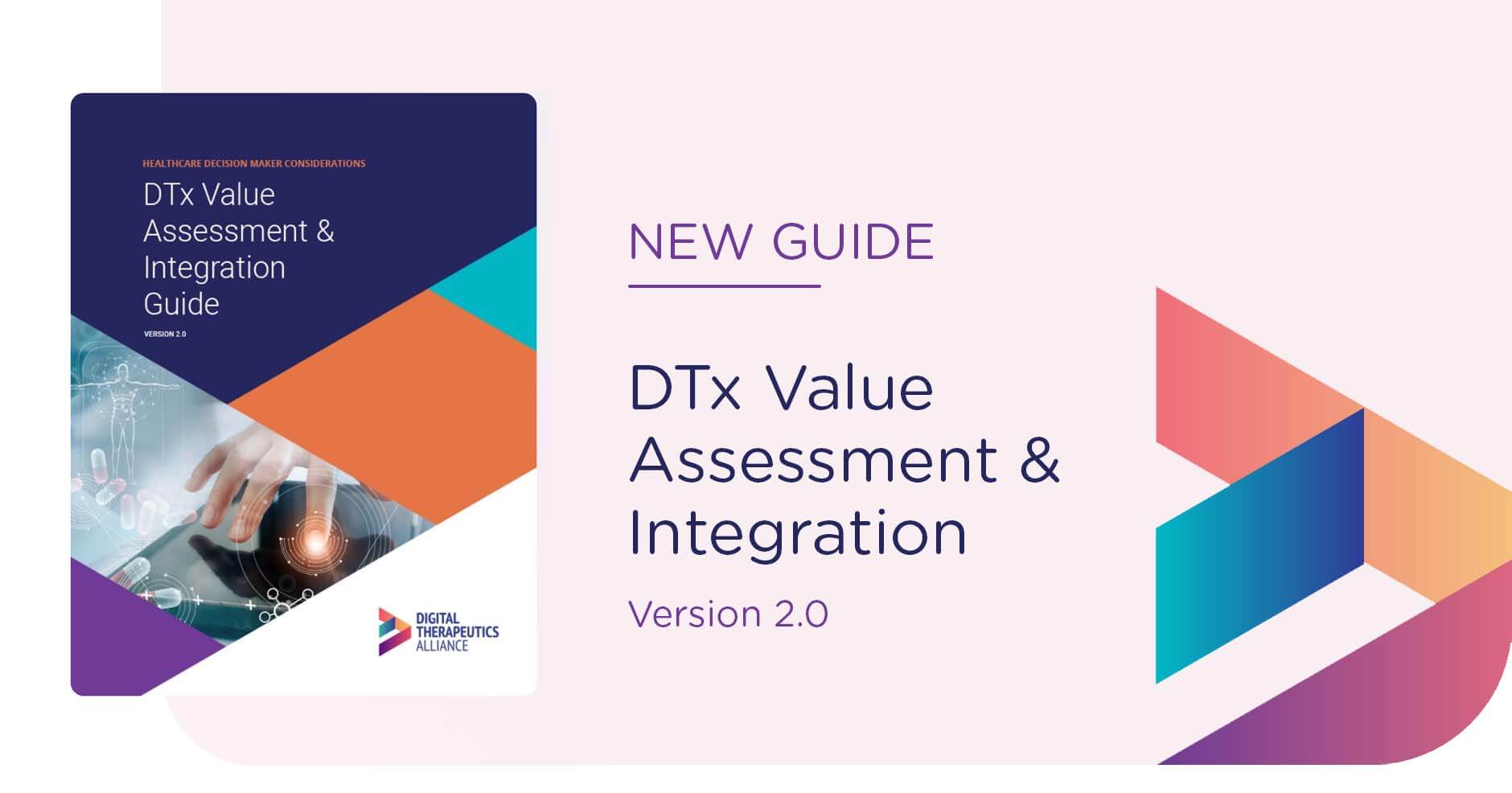The Digital Therapeutics Alliance’s new DTx Value Assessment & Integration Guide provides excellent information for healthcare decision makers (HCDMs), to help assess the value of DTx and the impact of these solutions in real-world settings.
HCDMs benefit from established frameworks when evaluating pharmaceuticals, but no equivalent for DTx has been available until now. With so few HCDMs having digital health experience this guide is a welcome step in providing comprehensive supporting material to encourage more widespread use of DTx.
Who is this guide aimed at and what does it cover?
The DTA are leading the way by providing this guide, which is the first step on a longer road. It’s intended as a starting point from which HCDMs and DTx manufacturers can work together to continually improve the framework to assess DTx products. Input from relevant stakeholders is encouraged through an online survey about the guide to facilitate its ongoing development.
Those who stand to benefit from the information provided include, clinical teams, policy makers, payors, compliance teams, and end users. They will now benefit from information on:
-
Clinical Impact & Clinical Team Engagement
-
DTx Product & Patient Facing Technical Considerations
-
Security/Data Privacy and Governance
-
DTx Product Implementation, Engagement, and Evaluation
-
Regulatory Oversight
-
Assessing Clinical Evidence
-
Utilizing DTx Generated RWD
-
Development & Impact of RWE
-
DTx Economic Assessment
An excellent tool giving key guidance in key areas
A value assessment guide for DTx is certainly needed now, and that speaks to the growing popularity of DTx but also the widespread lack of expertise in digital health products among HCDMs and many clinicians. This guide looks to start addressing these gaps in knowledge, especially in some key areas.
With the increasing establishment of HTA frameworks for evaluating DTx products in various regions around the world, it is fantastic to see the guide providing useful information on the topic of securing HTA (health technology assessor) approval. Good information is given on performing an economic analysis of a DTx solution, and on how to make a support case to a HTA with requirements for successful HTA submissions and negotiations clearly laid out.
Clinicians, who now have more opportunities to use DTx, will benefit from the information provided in the guide on how to assess the impacts of these products on patient care, how to implement them in the real-world, and how to leverage the real-world outcomes into patient care.
While no guide can include everything, and the DTA recognize this is a starting point, this is a fantastic first step, and there are plenty of opportunities and areas where subsequent versions can expand on.


